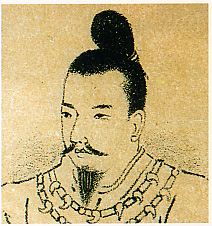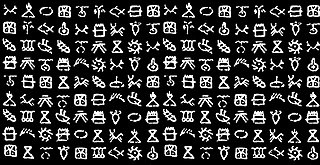
The vinyl killer (also known as a soundwagon or record runner) is a small record player which sits on top of a record and plays it by pushing or pulling itself along the grooves.

The vinyl killer (also known as a soundwagon or record runner) is a small record player which sits on top of a record and plays it by pushing or pulling itself along the grooves.
The earliest known example of the vinyl killer was the Chorocco, from 1976. Produced by Sony in Japan, it was used as a promotional item and never sold. A unit is on display at a Sony museum in Japan. [1]
A version of the product called the soundwagon was demonstrated at the Invention and New Product Exposition in 1982. It was being promoted by Jay Lance who was looking for a distributor in the United States at the time. [2] The exterior of the product was shaped like a Volkswagen campervan. [3]
The product plays music by driving around the record, following its groove. A lever on the side starts and stops the machine. It was capable of playing records at 33, 45, and 78 RPM, and in reverse. [3]
The name "vinyl killer" stems from the general opinion that the device can damage records more quickly than a standard turntable.

Emperor Kōshō, also known as Mimatsuhikokaeshine no Mikoto (真津日子訶恵志泥命) was the fifth legendary emperor of Japan, according to the traditional order of succession. Very little is known about this Emperor due to a lack of material available for further verification and study. Kōshō is known as a "legendary emperor" among historians as his actual existence is disputed. Nothing exists in the Kojiki other than his name and genealogy. Kōshō's reign allegedly began in 475 BC, he had one wife and two sons. After his death in 393 BC, his second son supposedly became the next emperor.

Emperor Kōan, also known as Yamatotarashihikokunioshihito no Mikoto (大倭帯日子国押人命) was the sixth legendary emperor of Japan, according to the traditional order of succession. Very little is known about this Emperor due to a lack of material available for further verification and study. Kōan is known as a "legendary emperor" among historians as his actual existence is disputed. Nothing exists in the Kojiki other than his name and genealogy. Kōan's reign allegedly began in 393 BC, he had one wife and two sons and reigned for more than 100 years until his death in 291 BC at the age of 137. One of his sons then supposedly became the next emperor. Emperor Kōan is traditionally accepted as the final emperor of the Jōmon period, which ended in 300 BC.

Walkman, stylised as WALKMAN (ウォークマン), is a brand of portable audio players manufactured and marketed by Japanese company Sony since 1979. The original Walkman started out as a portable cassette player and the brand was later extended to serve most of Sony's portable audio devices; since 2011 it consists exclusively of digital flash memory players. The current flagship product as of 2022 is the WM1ZM2 player.
A killer application is any software that is so necessary or desirable that it proves the core value of some larger technology, such as its host computer hardware, video game console, software platform, or operating system. Consumers would buy the host platform just to access that application, possibly substantially increasing sales of its host platform.
RCA Records is an American record label owned by Sony Music Entertainment, a subsidiary of Sony Corporation of America.

The National Diet Library (NDL) is the national library of Japan and among the largest libraries in the world. It was established in 1948 for the purpose of assisting members of the National Diet of Japan in researching matters of public policy. The library is similar in purpose and scope to the United States Library of Congress.
A handheld television is a portable device for watching television that usually uses a TFT LCD or OLED and CRT color display. Many of these devices resemble handheld transistor radios.

The LP is an analog sound storage medium, a phonograph record format characterized by: a speed of 33+1⁄3 rpm; a 12- or 10-inch diameter; use of the "microgroove" groove specification; and a vinyl composition disk. Introduced by Columbia Records in 1948, it was soon adopted as a new standard by the entire US record industry. Apart from a few relatively minor refinements and the important later addition of stereophonic sound in 1957, it remained the standard format for record albums, during a period in popular music known as the album era. Beginning in the late 1970s, LP sales began to decline because of the increasing popularity of Compact Cassettes, then in the 1980s of compact discs. By 1988, the latter format began to outsell LPs.

The National Museum of Japanese History, commonly known in Japanese as Rekihaku, is a history museum in Sakura, Chiba, Japan. The museum was founded in 1981 as an inter-university research consortium, and opened in 1983. The collections of museum focus on the history, archaeology, and folk culture of Japan.

Kaidā glyphs are a set of pictograms once used in the Yaeyama Islands of southwestern Japan. The word kaidā was taken from Yonaguni, and most studies on the pictographs focused on Yonaguni Island. However, there is evidence for their use in Yaeyama's other islands, most notably on Taketomi Island. They were used primarily for tax notices, thus were closely associated with the poll tax imposed on Yaeyama by Ryūkyū on Okinawa Island, which was in turn dominated by Satsuma Domain on Southern Kyushu.

Kyoto City Library of Historical Documents opened in Kyoto, Japan, in 1982. The museum's collection of over ninety thousand items relevant to the history of Kyoto includes materials relating to the Yase Dōji that have been designated an Important Cultural Property.

Ishikawa Prefectural History Museum is a prefectural museum in Kanazawa, Japan, dedicated to the history and culture of Ishikawa Prefecture. The three ICP red brick buildings date to 1909-14 and functioned first as the local arsenal, then after the Pacific War as the Kanazawa College of Art, before being converted into a museum in 1986.
Kokufu (国府) were the capitals of the historical Provinces of Japan from the Nara period to the Heian period.

Reimeikan, Kagoshima Prefectural Center for Historical Material opened in Kagoshima, Japan, in 1983. The museum, located in the grounds of Tsurumaru Castle, exhibits materials relating to the history and culture of Kagoshima Prefecture.
This is a genealogical tree of the leaders of the Fujiwara clan from 669 to 1871, who were otherwise known as the Tōshi no Chōja.
The documented history of make-up in Japan begins in the Edo period. While modern western makeup styles such as in Europe and the US emphasize pinpoint makeup for the eyes and mouth, modern Japanese styles place more emphasis on foundation, base makeup, and skin-care.

Bunkyo Museum is a public museum in Tokyo, Japan. It is the local history museum for the Bunkyō area. The museum was opened in April 1991. The museum has a permanent exhibition and special exhibitions. Since 1994, a newsletter, "Bunkyo Museum News" has been published once per year. In 2021, the museum celebrated its 30 year anniversary. Between 1991 and 2020 the museum has had more than 560,000 visitors.